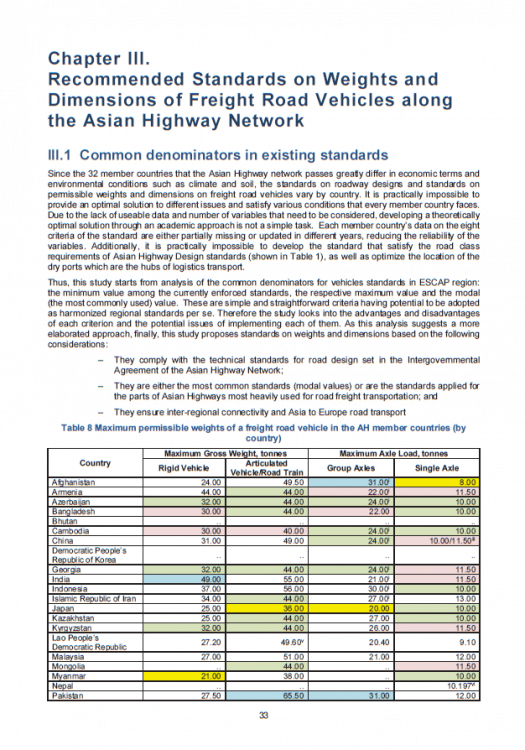Kami menggunakan cookies untuk membuat pengalaman Anda lebih baik. Untuk mematuhi petunjuk e-Pribadi yang baru, kami perlu meminta persetujuan Anda untuk menyetel cookies. Pelajari lebih lanjut .
Recommended Standards on Weights and Dimensions of Freight Road Vehicles along the Asian Highway Network
Since the 32 member countries that the Asian Highway network passes greatly differ in economic terms and environmental conditions such as climate and soil, the standards on roadway designs and standards on permissible weights and dimensions on freight road vehicles vary by country. It is practically impossible to provide an optimal solution to different issues and satisfy various conditions that every member country faces. Due to the lack of useable data and number of variables that need to be considered, developing a theoretically optimal solution through an academic approach is not a simple task. Each member country’s data on the eight criteria of the standard are either partially missing or updated in different years, reducing the reliability of the variables. Additionally, it is practically impossible to develop the standard that satisfy the road class requirements of Asian Highway Design standards (shown in Table 1), as well as optimize the location of the dry ports which are the hubs of logistics transport.

